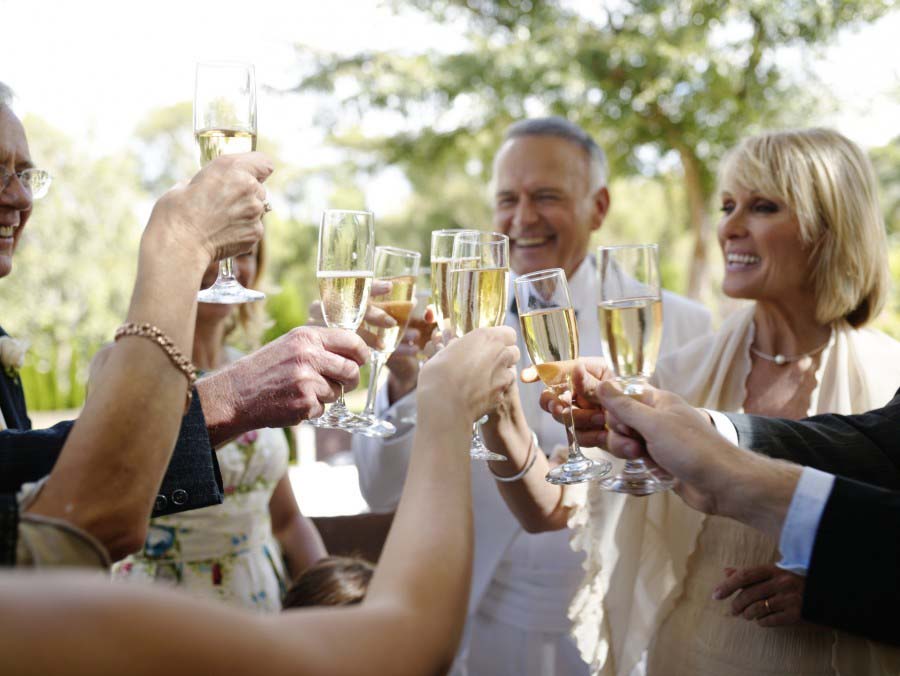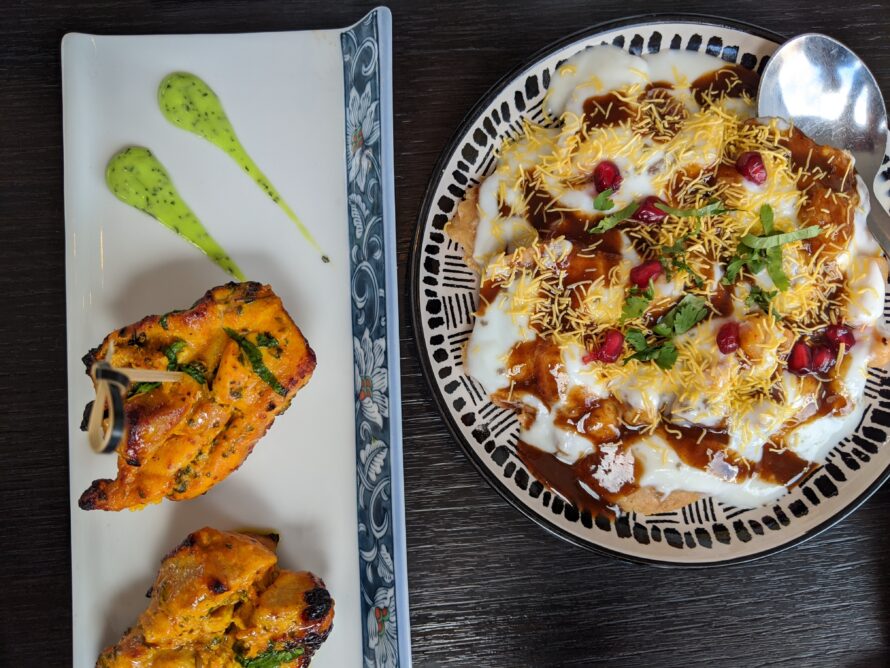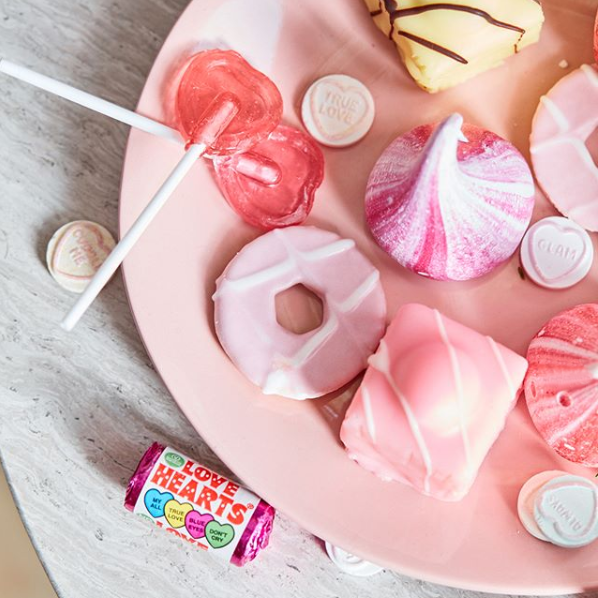A glass or two of champagne is a nice addition to most weddings, even if it’s only as a toast during the speeches. But a question you might be asking is – how many beverages should you serve and when?
The simple answer is – it’s your wedding and you make the rules. Plus, there’s a range of factors to consider, such as your budget and the size and age of your guest list. But, there is some useful etiquette and advice to considering when planning your beverages. Here are some suggestions…
Cocktail hour
Depending on when their ceremony ends, many couples will put on drinks and nibbles after it’s finished. There can be a few reasons for this, but often it’s to keep the guests occupied and encourage them to mingle and catch up before the reception. It’s also a handy way to make the time fly while the bride, groom and their attendants are doing photos.
As a general rule, offerings here tend to stay on the lighter side, with tipples such as light beer and low-alcohol wine, which won’t see guests getting too tipsy before the party has really begun. As with any drinks menu, though, this one should cater to the wider demographic, including young guests, teetotallers and the elderly. One way to do this is to plan for a nicely varied non-alcoholic menu, perhaps one that includes some refreshing punches, alongside the standard soft drinks.
Reception
As you’d expect, the reception is where most of your beverage budget will disappear, so it’s important to plan for it carefully. This means including alcohol in your overall budget so you know from the start how much you can afford to spend, and therefore what you can serve. It will also help you decide whether to do an open bar, where drinks are on the house, a cash bar where people pay for their own, or a combination of both *
For starters, dinner is a great time to keep things simple, say with beer, house wine and soft drink. Options with a low alcohol content are again a good idea, so people aren’t getting drunk too early in the night. Also note that you may not need these beverages in equal quantities. After all, on a hot day, people might not indulge in red wine, but will love a beer, so factor that into your planning. Once again, though, it’s also important to make sure you cater for all your guests, with plenty of choices to suit the young, old and abstaining, from canned soft drinks to fresh pressed juices. One other lovely idea for an extra touch of sophistication is to create a series of mocktails, which look beautiful and feel indulgent but contain no alcohol and therefore are safe for everyone to down.
As the night wears on, you might find people start to look for something stronger, say a cocktail or a glass of spirits. Some couples do make these part of their celebration, but far and away most people make these options available on a pay-only basis. Meaning if a guest feels like a gin and squash instead of a wine, they will need to foot the bill themselves. This will rarely make anyone think twice, as it’s pretty standard practice.
* If you do decide to have a strictly cash bar, with no drinks on the house, it’s important to let guests know in advance, perhaps on the invitation. That way, they know to bring some cash if they want to indulge.
Meal time
Focusing specifically on meal time, and there’s two main ways you can serve drinks to guests. You can either have it done by waiters, or you can leave bottles on the table. There’s pros and cons to both options – the more serving staff you have, the more the venue cost, while people with ready access to bottles may indulge more than they otherwise would.
So the best bet is to consider your guest list and work out which one you think will suit the celebration’s personality and budget the best. You might also want to look at including tea and coffee towards the end of the service to give people a chance to chill out, or even raise their energy levels, before the real partying kicks off.
The toast
During the official part of reception proceedings, it’s tradition for everyone to have a glass in front of them for toasts. In the main this tends to be champagne, but you don’t want to leave anyone out, which means you could offer alternatives such as sparkling juices or non-alcoholic cider. As with everything, it’s all about the sentiment, so you don’t need to go over the top with the priciest French champagne – something reasonably priced is just as suitable. After all, you’re not at a wine tasting or even a wine dinner. This is a reception, where shared camaraderie matters more than anything, so it’s not about going all out on drinks, it’s about having them available to enhance the night’s festivities.
Our tips…
- If you want to serve cocktails, narrow the list to just one or two so bar staff don’t have to open – and thus charge you for – myriad bottles of spirit. Just pick ones you love and serve them as your signature cocktails.
- If your venue allows you to bring in your own alcohol, keep an eye on bottle shops and liquor chains for specials. You might find a fantastic deal on a label you don’t know about but which will do the trick nicely.
- Think not just about the obvious places to have drinks, but other important ones as well. Chief among these is wherever the wedding party happens to be, given they’ll be on the go all day. So make sure you have plenty of drinks – especially water – in the wedding cars and have a small esky with beverages to take with you during the wedding photos.
- A method for keeping the costs down if you know you have big drinkers coming, is to pay by the head, not by the drink. This way you know the cost of what they’ll be imbibing for say four hours, instead of being left to wonder how someone got through hundreds of dollars worth of alcohol all on their own.
At the end of the day, though, there’s no right and wrong way to cater for alcohol at your reception. Full service or teetotal, it’s totally up to you. It’s your day so you should celebrate your way.





